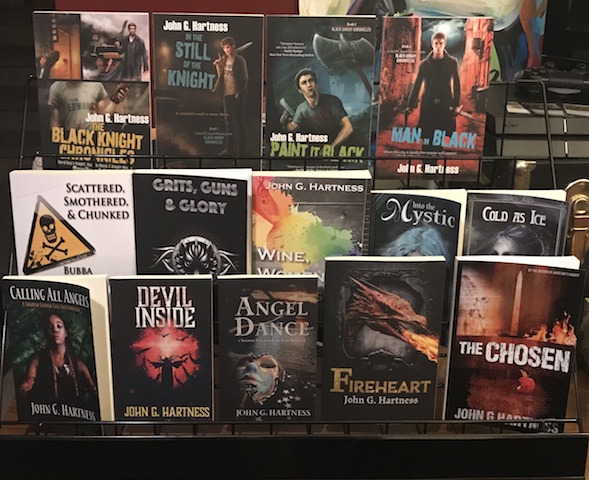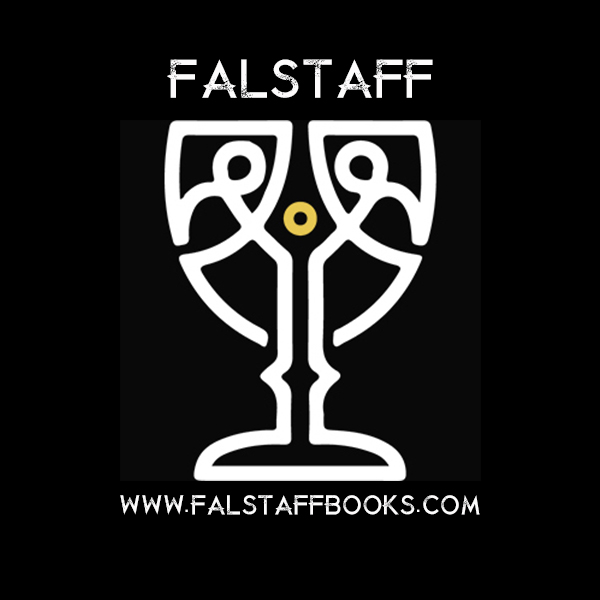Last time around, we talked about the two types of email list subscribers – incentivized subscribers and organic subscribers. Organic subscribers are the ones that come to you naturally, they are interested in you or your work, and they seek you out and sign up of their own free will. These are the unicorns of email list subscribers – they’re lovely, they’re beautiful, and may very well be mythical.
Nah, not really. But while they are the best type of subscriber, they are also the toughest to acquire, and the ones that require the most effort to cultivate. They are the folks that sign up from convention appearances, from links in the back of your books (you do have a link to your newsletter signup page in the back of your ebooks, don’t you?), or just from finding you on Facebook or the interwebs.
The other flavor of subscriber is much more prevalent, and they are the ones who subscribe because you give them something for signing up. I call these incentivized subscribers, and while it may seem at first blush that I value them less than organic subscribers, that’s not true at all. They just require different care and feeding.
Organic subscribers are easy to keep, but much harder to get in the first place. Incentivized subscribers are easier to get in the door, but much harder to keep once you have them. Both type of subscriber can turn into true fans over time, you just need to know what kind of cultivation you’ll have to do for each one.
There are good and bad ways to incentivize people signing up for your newsletter, and multiple methods of each. My favorite method of getting people to sign up for a newsletter is to give them a free ebook. I offer a free Quincy Harker short story, High Fashion Hell, to new subscribers. If you aren’t already on my email list, you can click here to join and get your free ebook. This story is available for sale, and it’s also available in an anthology, but there have been hundreds of copies of it claimed by people signing up for my email list since I started giving it away. So there is still some incentive to sign up, even with a story that is available elsewhere.
The way this works is – people see the link, click the link, and they are taken to a signup form on Mailchimp. Once they fill out the signup form, and confirm their email address, they receive another email that directs them to a page on BookFunnel. Book funnel hosts the ebook file and sends it to people in whatever format they request, for Kindle, Nook, iPad, whatever. You don’t have to put anything else in place. Mailchimp costs a monthly fee based on the number of email addresses on your list, and Bookfunnel charges based on the number of downloads per month.
I pay $25/ month for MailChimp and $10/month for BookFunnel. I also pay $20/month for Instafreebie, another service I use to send out ARCs and rewards. I’ll talk more about IF in a later post. With Hootsuite, another service I’ll talk about later, I spend about $60/month in automation and services to help with my marketing. As my lists and reach grows, so will that number. Nothing in life is free, and if it is, it’s probably worth what you pay for it. Hell, I even have a blurb at the end of this post asking for money, so this advice isn’t even really free. (BTW, if you think this advice is valuable and want me to continue making posts like this, feel free to join my Patreon.)
So how do you boost your numbers quickly? Well, there are a couple of ways. First, you can do newsletter swaps with writers that have more subscribers than you. Or even writers with the same number of subscribers as you, because they’re almost certainly different subscribers. Here’s how that works – A few months ago, Eric Asher set up a six-author mailing list swap. Each author sent out a newsletter to their list with everybody else’s book cover in it, and built a link in the cover to that author’s signup page. So all the people on Eric’s list who clicked on the High Fashion Hell cover got the chance to sign up for my email list. All the people who clicked on Eric’s cover in my newsletter got the chance to sign up for his list (and get some awesome free books. Go to his website. Sign up for the list. Tell him I said Hi).
I gained several hundred new subscribers, because they wanted free ebooks. A lot of them stuck around, because they were already pre-sorted as people who wanted to read the kind of stuff I write, because Eric and I write in similar genres. Those are incentivized subscribers, but they’re vetted leads, and much more likely to become “sticky” than a blind signup in my next example.
That’s a good way to incentivize signups – you aren’t spending much cash, and the thing you’re giving away is something that people who want to buy your books will want, but the general populace will have little interest in. Someone who doesn’t read will have no interest in signing up for my email list to get a free ebook. But they might want a free iPad!
Yeah, big-ticket giveaways aren’t worth a shit. They just aren’t. There is some value to giving away something like a Kindle Paperwhite, but a Kindle Fire or an iPad has just as much value to a non-reader as it does to a reader, and even with a PaperWhite, there’s no guarantee that the winner will read in your genre. If you write paranormal romance, you aren’t going to get a whole lot of value if a Chris Kennedy fan wins a Kindle from you. But if you like Military Sci-Fi, check Chris out. He’s good people.
The stickiness of a subscriber who joins up for a big-ticket giveaway like that is much, much lower than someone who signs up to get a free ebook. When I’ve done big massive email list building promotions, I see a lot of quick signups, then a lot of quick unsubscribes as soon as they get the first newsletter. And that costs money, not just in the cost of the item given away, but also in the escalation of your mailing list numbers, which costs more for MailChimp. So be careful about participating in those kind of campaigns. I just don’t think they’re worth it.
So what should you do if you’re just starting out trying to build an email list?
- Set up a MailChimp Account. This will manage the list so yo don’t have to fuck around in Excel or Access or something else awful. If you don’t like MailChimp, find another email list service. But use something of that ilk.
- Set up Automation so that you as soon as someone signs up for your list, they get a welcome email from you. This is where you can set up your giveaway as well.
- Set up a BookFunnel with a free ebook to lure subscribers in. It can’t be anything that’s available in Kindle Unlimited, but it also doesn’t have to be a novel. I feel like too many writers give away the farm to get email subscribers. If you’ve only got two novels published, don’t give one of them away for an email address. Write a prequel novella, or even short story, and use that as bait.
- Put a widget on your website with a link to drive signups. The book cover with a “Sign up for my Email List” tag is all you need.
- Create a Call to Action button on your Facebook Author page that is a signup button for your email list.
- Automate your Twitter and Facebook (or other social media outlets) to send out one message every day reminding people that they can get free shit by signing up for your email list. Every. Single. Day. Yes, even you, with one book out. Don’t do it every hour, but do it every day. Less than 20% of your FB contacts see the things you post, so you have to post frequently to get them out there. I don’t care if you think it’s annoying, shut up and do it. I’ll teach you how to Hootsuite later.
- Find some other authors who have shitty newsletter numbers and do a swap with them. Find other writers in your genre and do a newsletter swap with them. See if your publisher will send out a newsletter with your book cover linking to a newsletter signup page.
- Find authors who like you that have much bigger lists who will let you ride their coattails a little and do a newsletter swap with you. Don’t use this willy-nilly, and don’t email me. If everybody that reads this emails me, I’ll be overwhelmed. I might even get ten emails, given the traffic I get here. 🙂
- Communicate with your list regularly. At least once a month. Don’t consider it spam. Don’t consider it bothering people. Your readers, as much as you love them, aren’t your besties. They are your customers, and your job is to make sure they know about everything you have out there that they can buy. So go get their money!
That’s a pretty good primer on building an email list. I hope it’s been helpful. If you think I missed something, hit me up in comments. If you think I’m an idiot, then you probably shouldn’t have read this far and should go do something more fulfilling. 🙂 If you think I’m brilliant, buy all my shit. Or click the link for my Patreon.







